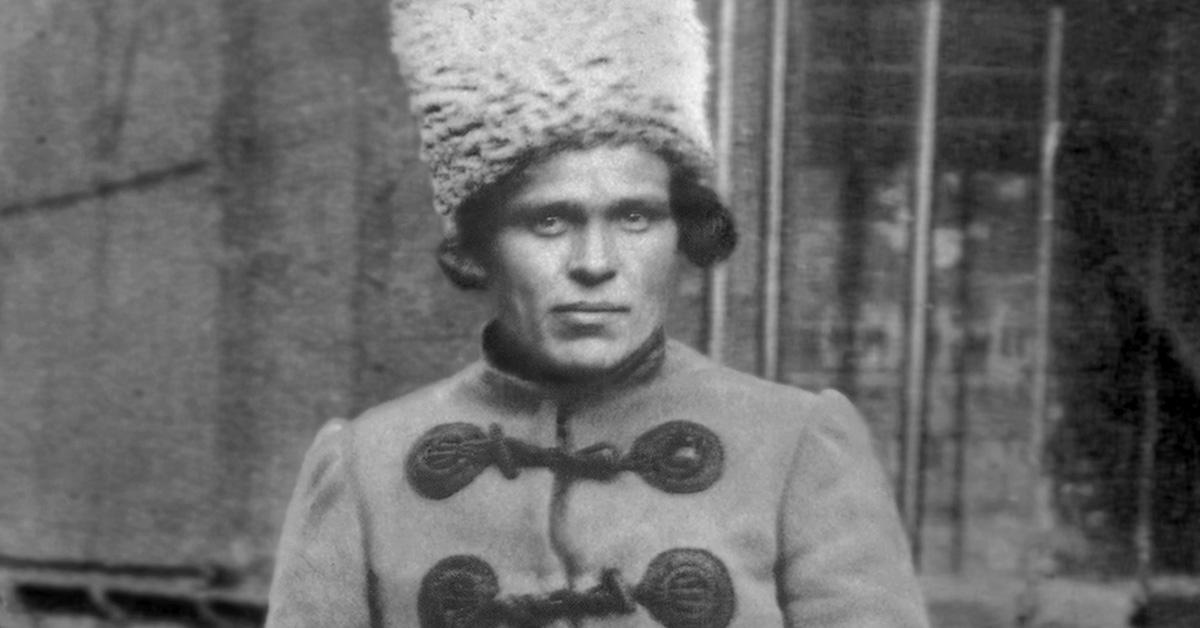
The state often makes use of its former opponents once they are safely dead and no longer the threat they were in life. The Ukrainian state and its media have done this with the legendary anarchist communist Nestor Makhno.
Makhno, a native of Huliaipole in the Zaporizhzhia region of Ukraine, was a lifelong anarchist revolutionary. The son of poor peasants, he joined his local anarchist communist group in 1906, subsequently spending nine years in prison for his involvement with the killing of a district police officer. Whilst in prison he developed his politics and when liberated by the Provisional Government in 1917, he returned to his home town and was elected chair of the local carpenters and metal workers union and the local Soviet of Peasants and Workers Deputies and threw himself into the maelstrom of the Russian revolution in Ukraine. He has become most well known for leading the Revolutionary Insurgent Army, also known as the Black Army. This politico-military force combatted the White counter-revolutionary armies and, eventually the Red Army. But it also vigorously fought Ukrainian Nationalists, a faction of whom had murdered Makhno’s brother, Omelian. Makhno was no friend of any sort of nationalism – neither Ukrainian or Russian. The ‘Makhnovist’ movement attempted to create free territory based on self-managed communes. The largest of these was named after Rosa Luxemburg, the Polish Marxist of Jewish descent. Hardly the actions of Ukrainian nationalists!
But that hasn’t stopped Makhno being claimed as a Ukrainian patriot, despite all the evidence to the contrary. Whilst this started before the Russian invasion, it has increased during the war with many fighters claiming to be in the tradition of Makhno and with nationalists using imagery associated with the Makhnovists. This took an interesting turn with the destruction of the Huliaipole Museum on August 23rd this year, following a Russian missile attack. This local museum centres Huliaipole’s most famous son and the movement associated with his name, with displays and permanent exhibitions. The exhibits, however, were moved into central State storage facilities for safekeeping away from the frontline town the day before the attack.
The destruction of the museum, seen as a direct attack upon Ukrainian and Zaporozhzian culture, has been used to whip up patriotic sentiment and Makhno’s memory, reimagined as a national hero – a sort of national anarchist – has been used to mobilise support for war at a time when resistance to conscription is at its highest point since the beginning of the conflict.
Added to this, the Huliaipole’s statue of Makhno, which was partially destroyed by a Russian attack on May 23rd, has recently been replaced with fanfare with the addition of a Ukrainian national flag in the hand of a man who never would have held it in real life. The replacement has hoped to raise morale in a town where the only civic building still fully functioning was the museum. Since May 2023 no ATMs, no doctors, with only 1 shop open 2 hours per day accepting only cash, and only 600 civilians remaining from a pre-war 14,000.
Odessa based historian, Vyacheslav Azarov gives some background to attempts to co-opt Makhno to the nationalist cause:
“The first campaign to privatise Makhnovism by nationalists began during the “orange” demonstrations of 2004 and the subsequent rule of Victor Yushchenko. The organizers of the first Maidan tried to compare their political technology events with the people’s liberation of Huliaipole, and the patriotic grant activists led by Oles Doniy actively called for the “posthumous Ukrainisation” of Makhno. They did not hide the fact that the appropriation of Makhnovist heritage was necessary for the purpose of promoting nationalist ideology in the territories of the South-East, which was hostile to the Banderist movement. The peak of this campaign was the ceremonial installation of the monument to the Batko in Huliaipole, which was organized by the then Minister of Internal Affairs Yuriy Lutsenko with the financial support of a well-known oligarch from Zaporozhye. The monument is certainly good – but the fact that the police minister stood behind it, who then dropped the phrase: “if you want, call me a racist!”, gave the events an absurd character. This political privatisation has been seen at the Independence Day with Makhno festival, which was held in Huliaipole for several years in a row under the patronage of the same Lutsenko. Banderist flags were flying over the concert venue, anti-Semitic and xenophobic slogans were heard from the stage, the organizers forbade performing Russian-language songs and generally speaking Russian on stage – the native language for the absolute majority of Huliaipole residents. Uncommitted guests of the Makhnofest noted the dominance of nationalists and reactionary rhetoric – suffice it to say that the cult Odessa Nazi Maxim Chayka took part in it. And all this completely contradicted the ideas and views of the outstanding Ukrainian anarchist.”
Sad and bitter days in the birthplace of Makhno.
Source: Anarchist Communist Group